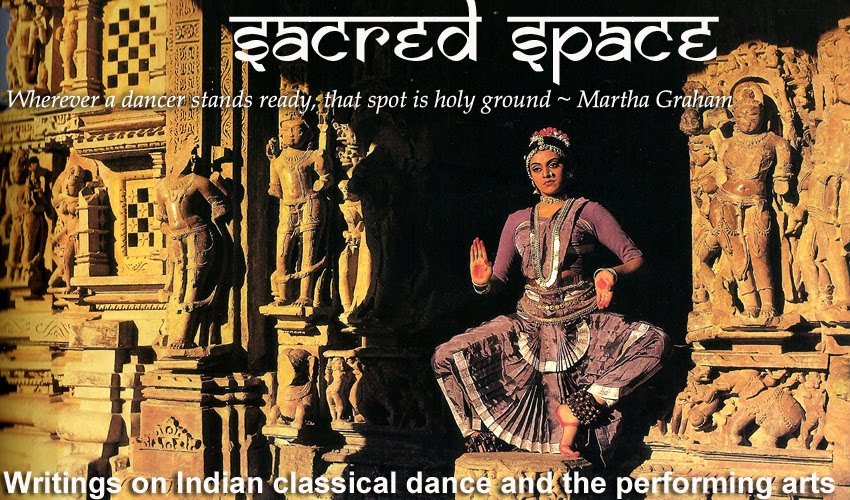Well-known
Odissi dancer Ileana Citaristi’s third book My
Journey: A Tale of Two Births is an
autobiography and memoir which tells the story of her coming of age
during the student movement in Europe, her artistic journey which led
her to India, and chronicles her experiences and achievements as a
dancer, performer, choreographer and author.
The subtitle
alludes to Citaristi’s life before and after her arrival in
Cuttack, Orissa in June 1979 to study Odissi under the renowned guru
Kelucharan Mohapatra, a trip which was supposed to last only a few
months. She considers this to be her ‘second birth’, while her
‘first birth’ happened twenty-seven years earlier in Bergamo, a
provincial town in the foothills of the Italian Alps.
 In this
absorbing memoir which is a factual chronicle of her life story but
also reads like a travelogue, she tells how her identity was forged
during the student protests sweeping Europe in the late 1960s, a time
when she rebelled against conservative society, her Catholic
upbringing and her authoritarian father. She joins a theatre group
after finishing school and explores different aspects of physical
theatre. At the same time she’s drawn to Eastern philosophy,
earning a doctorate degree from the University of Venice.
In this
absorbing memoir which is a factual chronicle of her life story but
also reads like a travelogue, she tells how her identity was forged
during the student protests sweeping Europe in the late 1960s, a time
when she rebelled against conservative society, her Catholic
upbringing and her authoritarian father. She joins a theatre group
after finishing school and explores different aspects of physical
theatre. At the same time she’s drawn to Eastern philosophy,
earning a doctorate degree from the University of Venice.
Her
interest in the East and her experiments in theatre and a search for
a ‘complete body movement vocabulary’ inevitably take her to
India. After a first exploratory overland trip, she returns a few
years later for an intensive workshop in Kathakali in Kerala and
travels to Bhubaneswar, Orissa where she takes her first lessons in
Odissi from renowned dancer Sanjukta Panigrahi. Her third departure
for India in 1979 becomes her last one: she eventually makes Orissa
her home, studying with guru Kelucharan Mohapatra until his death in
2004, and in the meantime making a name for herself as a performer
and choreographer of Odissi and Chhau (which she studies under guru
Sri Hari Nayak), establishing her own dance institution in
Bhubaneswar, and eventually being conferred the prestigious Padma
Shri award by the Indian government in recognition of her
contribution to Odissi.
In the
book, Citaristi reveals the challenges of being a foreign student of
Indian dance, attracting at first the support but also antagonism of
other dancers, and experiencing heated opposition to her very first
innovative works in a staunchly classical milieu. She also shares
many amusing anecdotes about the inevitable clashes she experiences
between the two cultural worlds she occupies. Having rejected
authority and asserted her feminist and egalitarian ideals during her
student days, in India she finds herself submitting herself to the
demands of a traditional dance form and guru. She tells the humorous
story of how her guru left the room the first time she stood before
him with her “mass of unruly curly hair”, long rainbow-coloured
skirt and sleeveless t-shirt. She took a hint from a fellow student
to “cover herself more” and appeared for dance class the next day
in what she thought was an appropriate kurta, only to have her
teacher take her aside and mumble the word ‘bra’. Finding herself
far, far away from her bra-burning feminist days, she urgently
telegrammed her mother to send her all her bikini tops without delay!
The theme
of transformation is a dominant one. When her parents came for a
visit a year and a half after her arrival in India, they are
surprised to find their rebellious hippie daughter transformed: her
‘wild hair’ is tied back neatly and she’s wearing a sari. She
describes her transformation as the culmination of her search: “The
rebel in me did not have reason to exist anymore since I had found
what I was searching for.”
This
memoir is of obvious interest to students of Indian classical dance
and readers who enjoy reading about cross-cultural experiences and
travelogues related to India. It is also an important chronicle of
the author’s experiences learning under one of India’s most
renowned dance gurus. Considering the author is a non-native English
speaker, the book would have benefited from more careful editing.
Ileana
Citaristi is also the author of The
Making of a Guru, a biography of guru
Kelucharan Mohapatra (2001), and Traditional
Martial Practices in Odisha (2012).
You can watch a video of Ileana Citaristi speaking about A Tale of Two Births here.
Published
in the Autumn 2015 issue of Pulse magazine.




